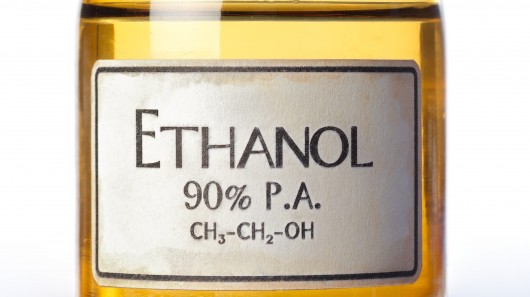Ethanol may be touted as a more eco-friendly alternative to fossil fuels, but it's not without its own drawbacks. Most importantly, the corn or other plants required as feedstock often take up field space that could otherwise be put to use growing food crops. Also, as with other plants, the feedstock crops require large amounts of water and fertilizer. Now, however, scientists at Stanford University have devised a method of producing liquid ethanol from carbon monoxide gas.
The technology was developed by assistant professor of chemistry Matthew Kanan and graduate student Christina Li. Whereas plant-based ethanol is obtained through a fermentation process, their technique involves taking water saturated with carbon monoxide gas, and placing it in an electrochemical cell at room temperature.
Like other fuel cells, theirs has two electrodes (an anode and a cathode), which an electrical current flows between. In the case of a hydrogen fuel cell, the application of that current would convert ordinary water contained within the cell into oxygen gas and hydrogen gas. By using a cathode made of oxide-derived copper, however, Kanan and Li were able to reduce the carbon monoxide in their water into ethanol and acetate.
While a cathode made from conventional copper could do the same thing to a limited extent, it would only have been about one tenth as efficient. "Conventional copper electrodes consist of individual nanoparticles that just sit on top of each other," Kanan explained. "Oxide-derived copper, on the other hand, is made of copper nanocrystals that are all linked together in a continuous network with well-defined grain boundaries." That structure allows it to use up to 57 percent of the electrical current for producing the ethanol and acetate – according to Stanford, that number is quite impressive.
What would be more impressive is if the electricity used in the process could be obtained from renewable sources, and if the carbon monoxide could be derived from something "greener" than the current source, fossil fuels. The researchers are working toward both of these goals, along with making the process more efficient. They're also looking at using the technology to produce fuels other than ethanol.
A paper on the research was published last week in the journal Nature.
Source: Stanford University
copyright © Gizmag 2003 - 2014
